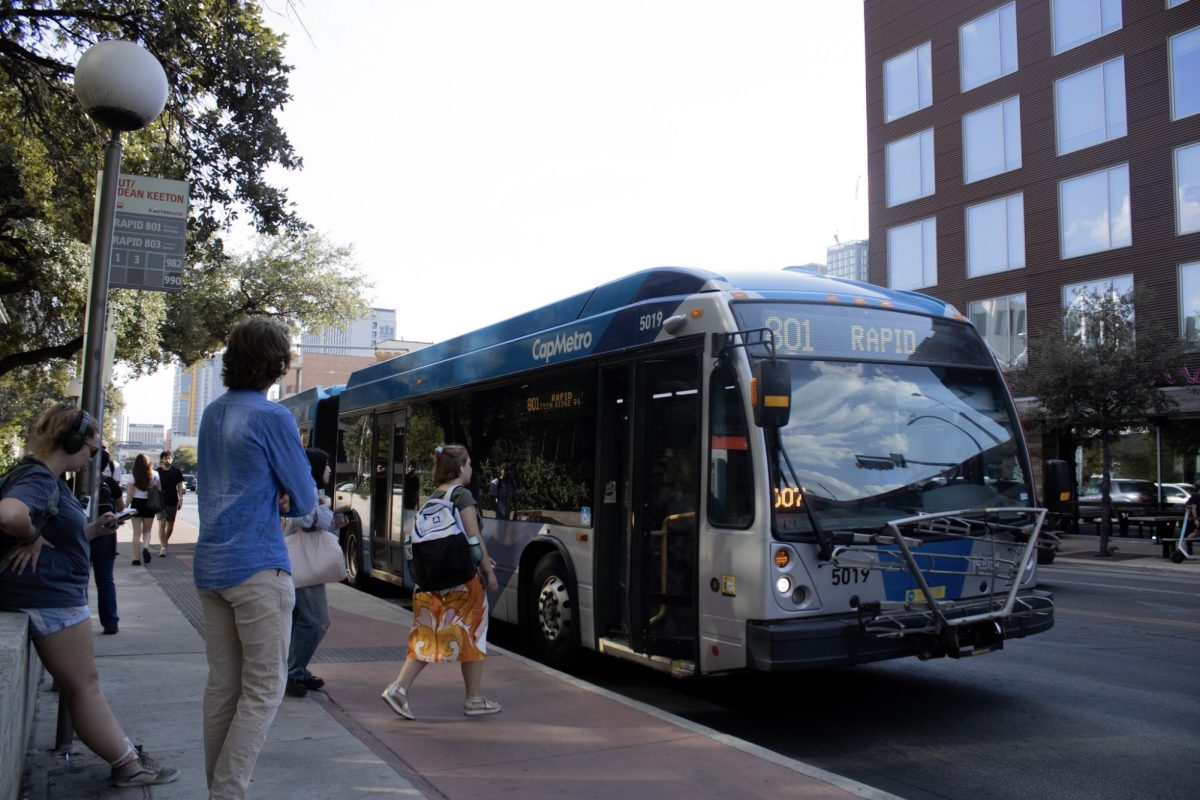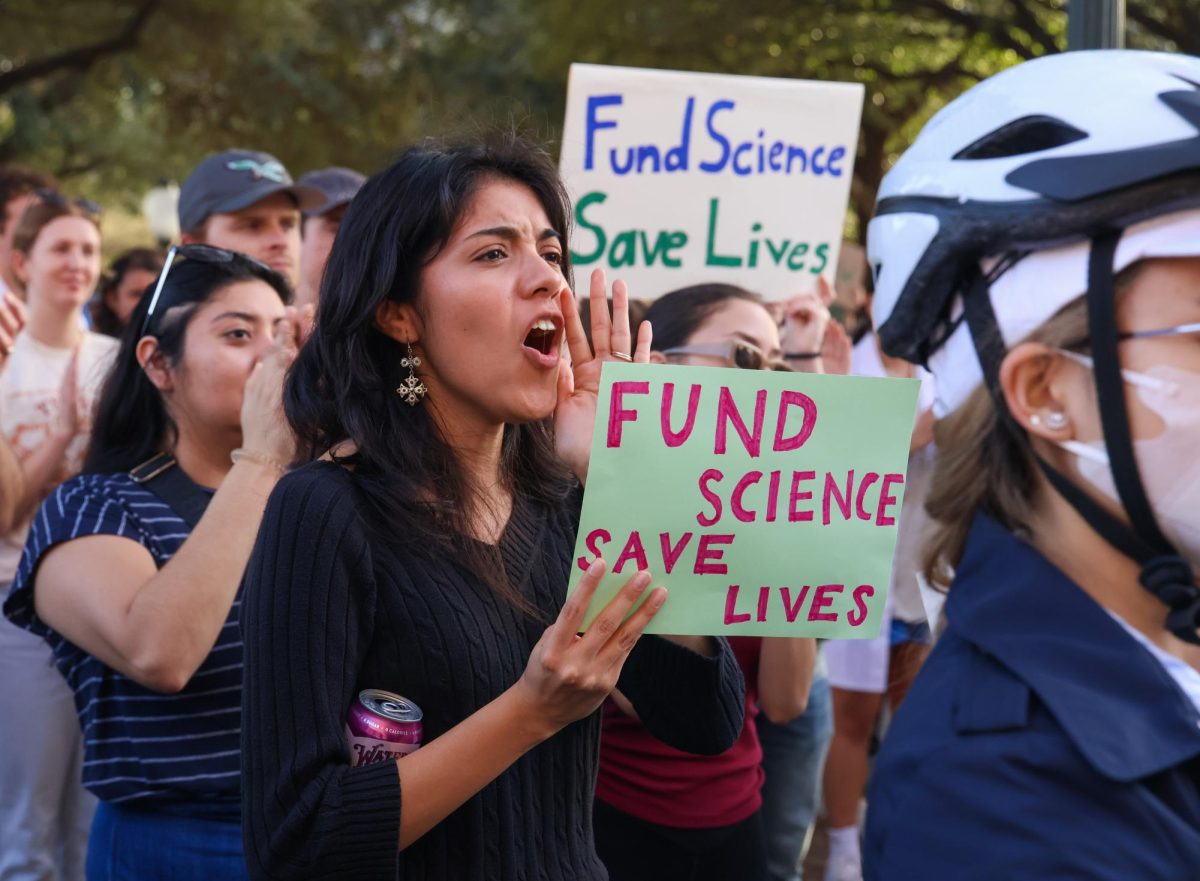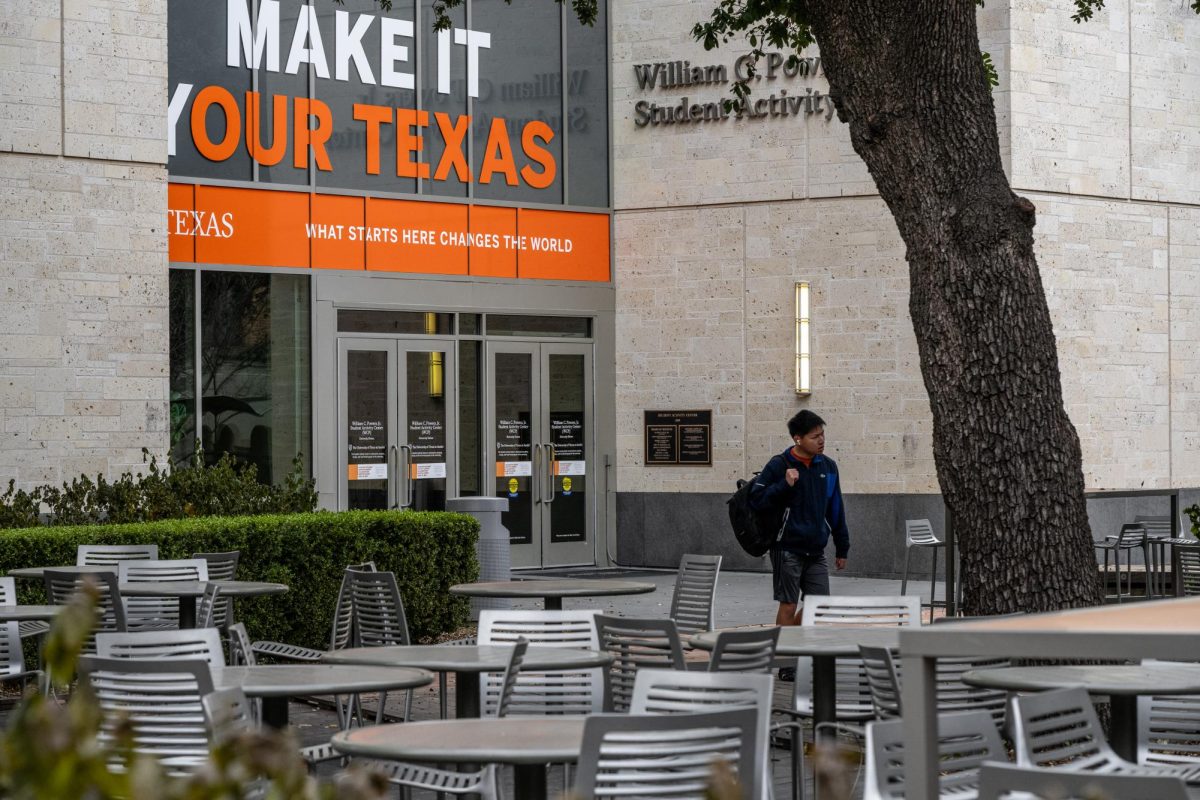New CapMetro Rapid buses will be diesel-powered and arrive every 20 to 30 minutes by spring 2025, CapMetro confirmed Wednesday. CapMetro plans to reach its all-electric, 10 to 15-minute arrival time goal by 2026, according to comments on the CapMetro website.
“The new CapMetro Rapid lines will initially use diesel buses until the supporting charging infrastructure for electric buses is fully complete,” CapMetro communications manager Jorge Ortega said in an emailed statement. “Once the infrastructure is in place, anticipated in 2026, the new CapMetro Rapid lines will fully operate with all-zero emission vehicles.”
In July, CapMetro halted its shift to an all-electric system due to high demand and issues with supply chain, battery range and unreliable technology, said Bill McCamley, executive director of Transit Forward, an organization that works to educate residents about public transit.
“If you look across the country and across the world, cities have these goals to electrify their bus fleets,” McCamley said. “Austin’s actually a leader in how many electric buses they currently have running.”
Two upcoming Rapid routes, the 800 Pleasant Valley and 837 Expo Center lines, broke ground in October 2021 with a goal to finish in summer 2023. The routes are still incomplete. They will be unveiled in spring of next year, according to CapMetro.
Rapid 801 and 803 are up and running, with stops on UT’s campus at West Mall and Dean Keaton. These buses usually arrive every 10 to 15 minutes on weekdays and 15 to 20 minutes on weekends, according to CapMetro.
“I believe in the past 12 months, they’ve had 3.8 million boardings on those lines,” McCamley said.
Pedro Salas, a music and violin performance freshman, said he takes the 201 and 10 buses from his South Austin home to campus every day. Once the 800 Rapid route construction is complete, it will run through his transfer stop, where he usually waits around 15 minutes for the bus to arrive. He said it won’t make much of a difference if the Rapid bus still arrives every 20-30 minutes since his main problem with public transportation is planning his day around the bus schedule.
“If (the bus) was like every 15 minutes, I could possibly get there a bit sooner instead of having to wait 30 minutes,” Salas said.
The Rapid routes are part of Project Connect, a $7.1 billion transit expansion package — the largest in Austin’s history. A group of Austin taxpayers filed a class-action lawsuit against the City Council in August, stating, “the City has drastically reduced the Project Connect plan but continues to collect the full amount of the Project Connect tax.”
“I support the goals of Project Connect, but it has been a bumpy road since Austinites, myself included, voted for it,” Austin City Council member Zohaib Qadri said. “Like all major infrastructure projects, inflation hit us hard, and the electric vehicle technology just isn’t quite robust enough to support an entire fleet yet.”
The project uses tax money for the construction of the light rail system, expansion of the Red Line, pickup services, anti-displacement funding and buying land for affordable developments.
“Project Connect is holistic,” McCamley said. “It’s very popular. Voters voted for it almost 60/40. … (The lawsuit) is a last-gasp Hail Mary by a few people who don’t like this to basically subvert the will of the voters. At Transit Forward, we support the voters, we support democracy, we support transit and affordability and a greener place to be. Project Connect does all these things.”














